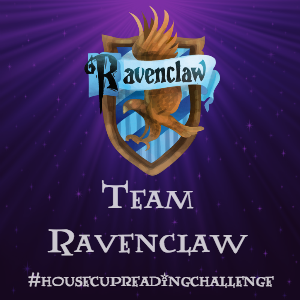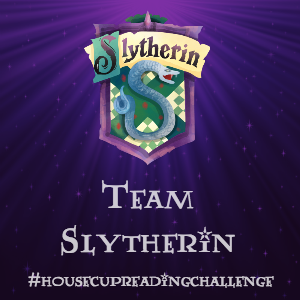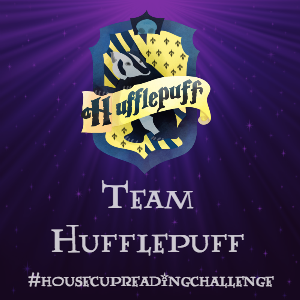From The Agent’s Desk:
How to Edit!
I was having a conversation with my author, Shanna, the other day, and she was reading a post about editing and what to do once you’ve finished your first manuscript. Of course, she then goes on a clarifying rant about how it’s not just editing, but HOW to edit that took her a while to understand. Being the English person I am, I completely didn’t understand this for a minute and spent some time just sitting and thinking about it. I turned back to her, now realizing that editing and writing doesn’t come naturally for most people and immediately said, “THIS is something I can write about!”
So, here I am, and here you are reading this, hoping to better your editing skills. No pressure, right?! I’m better at teaching than I am at small talk, so let’s just get right to it!
Editing is so much about knowing your character, your story, and your voice, and most importantly, your weaknesses. Most people can’t identify their weaknesses until they have someone else point it out for them, and even then, writing is so subjective that another’s opinion doesn’t always help you with your own story and voice. There are times it’s even taken people years for someone to say “hey, you’re doing this wrong” in order for things to finally click into place.
The guidelines below are to help you identify weaknesses in your work and other people’s work. They’re not cure-alls, and they are most definitely not an instantaneous fix, but they will help you learn and recognize what’s most needed in your work when you’re so used to your voice that you can’t separate yourself from your manuscript. I highly advise multiple beta readers and critique partners in addition to these editing techniques, as all of these experiences help you to become a better writer! So, read on, my dear writers, and please feel free to share your thoughts and ideas in the comments below!
1. Repetition of Words
This is a huge one I see constantly during line edits. If you’re repeating words, it needs to be purposeful and part of your voice/character’s voice. It should be a catchphrase or related to an emotion. However, repeating words for readers means that you’re losing your reader’s interest quickly. They’re reading your story because it’s something different, so you need to GIVE them something different in each line. Each line, paragraph, page, chapter, etc., should be ADDING to their experience as readers and moving them along at a nice pace. It’s all purposeful, and repetition of words is one of the biggest mistakes a writer can make.
In addition to this, there are probably a couple thousand words in your manuscript that you don’t even need in the vein of “that”, “very”, “just”, “softly” and many more. DELETE these words. They’re some of the most common words in the English language and they do nothing to further your manuscript and your writing.
I highly suggest going to Diana Urban’s post here, where she lists 43 words that you should be able to cut from your manuscript immediately. Open it, read it, look for them, and delete them!
2. Sentence Structure Variation
Speaking of words, sentence structure variation is my biggest pet peeve. This is especially difficult for people writing in first person because you’re somewhat limited, and then your sentences come out with “I ran to the mall. I bought that shirt I had wanted for so long. I had finally fulfilled my dream of owning the blue shirt. All my hard work paid off.”
Almost every single sentence we write naturally comes out as noun, verb, prepositional phrase, and so on and so forth. It turns into an extremely boring read, and if you do your research, you’ll find that the best writers are MASTERS of varying their sentence structure, including fragments, slang, and conjunctions in order to make reading flow nicely for today’s readers.
The only reason you should be repeating your sentence structure is to make an emphasis. If you want emphasis on a certain feeling, emotion, point, etc., it’s possible to repeat that sentence structure, but don’t over use it. If you must repeat your sentence structure for emphasis, stick to two sentences, as it’s enough for your brain to recognize it, but not enough for your readers to become bored of your writing.
In addition, my best advice for this is to STUDY some of your favorite writers in the age range and genre you’re writing in. Read their work and take notes. Some of your favorite sentences, paragraphs, and quotes, how are they written? What about it draws your attention? Where is the emphasis in the sentence and how are the sentences around it written to set up for your favorite lines?
3. Expository Language
One of the best ways to identify expository language is to go through your manuscript piece by piece and continue to ask yourself if your world building and narration is coming from your character or YOU! Is there a 3rd person narrator that just seems to pop up at the precise time needed to describe grandma’s wallpaper in the afternoon light? Is your narrator giving away secrets to your book before they actually happen, or after the fact? Is your reader being filled in to background information from this narrator, because they need to know the information but haven’t received it through action or dialogue yet?
If you answered “yes” to any of these, you’re including expository language where it doesn’t need to be. Even in adult manuscripts, it should be your characters voice coming through to build the world and emotions involved. It should be your character’s voice and dialogue cluing your readers in to past events and other’s feelings. You don’t need the extra narrator and descriptions. Take them all out and find a way to bring your back story, emotions, and world building in through dialogue, actions, and inner voice.
This is the classic “show, don’t tell” response that many people receive. Be aware of this, because if you master the practice of showing, rather than telling, effectively getting rid of your expository language, you have improved your writing ability ten fold!
4. Dialogue as a Purpose
I read a tweet from Writer’s Digest the other day, quoting Jordan Rosenfeld saying “Dialogue should serve a purpose, and that purpose should not be to reveal something obvious.”
How many of you state the obvious in your manuscripts? Do you clue the reader in with actions and dialogue, and then have your characters state what the reader should already know? TAKE IT OUT! It doesn’t need to be there. There is so much story to tell just in the look in someones eyes, body language, actions, and even inner voice. Why does your character need to say it?
In addition, if your character does need to say it and tell another character about something, you need to make sure that all of your characters actions support that statement and how they’re feeling about it, without fully giving the idea away. Every single word in your manuscript serves a purpose, and if you find dialogue that doesn’t serve a purpose, is placed in there as a useless filler, is put in there to make a reader laugh, is stating the obvious or repeating something the reader already knows, take it out. It doesn’t need to be there, and I can assure you that your manuscript and writing skills will be stronger by learning to connect the two dots around it without needless dialogue.
What are your characters really trying to say? How else can they express this? Is the reader already aware of what needs to be said?
5. Realistic Dialogue
This gets many, many people rejections from my query box. If you have a contemporary novel and you’re not using contractions (can’t, won’t, didn’t, etc.) than you need to start using them. You should be writing dialogue and voice the same way you speak. We, as most humans, speak in slang, and to have your character not speak in slang means that you’re character isn’t realistic or relatable.
This isn’t to say that if you’re writing a historic novel, your characters can’t speak in proper, older English. Or maybe your manuscript takes place in another country where the language is broken from another character’s point of view, so you need to write your dialogue with an accent (but not too much, as it still needs to be readable!). Write it how you would hear it and understand it. Write your dialogue with thought and precision. Going back to your dialogue should be purposeful, so should every single word in your dialogue be purposefully written to be fluent, relatable, realistic, and readable.
Small tip: If you’re writing in an accent or inserting another language into your manuscript, let your readers imagination work FOR you, not against you. Your readers will naturally highlight the accent and will hear it in their minds, even if it’s lessened to a point of understanding. You don’t want your reader overworking themselves trying to figure out what your dialogue actually says in the accent. You need a comfortable in between to let your reader’s minds wander and help you. Saying a few words in another language that your readers may not understand can also help to bring a sense of culture to your manuscript. You don’t have to have them always explain these words, either. If you give enough context clues in your manuscript by having other characters react to their words or respond to them, your reader should be able to figure it out without much help. If they really want to know what the word is, it means they’re invested and they’ll look it up.
A few questions for your as you go through your manuscript: Is this how I or my character would say this line? If they’re speaking differently than the other characters, is there a reason for it? Is my accent so overdone that my readers can’t understand what the character is really trying to say? Are they speaking in slang and fragments like I do? What slang and fragments would have been used by my character during this time period?
6. Realistic Character Actions
This will be explained more in my next post about larger ideas, but it’s important to take note of this while addressing your dialogue as well. As writers, we have a tendency to insert random dialogue or plot points that don’t actually make sense to our readers, but they make sense in our heads. Because we plan all of this out and think to ourselves, “YES! My problems are solved! I know how to make my story work!” When in fact, you’re just confusing your reader by finding the easiest way out, rather than making your actions, dialogue, and voice realistic.
This is tough because sometimes it takes another person to point out the unrealistic adventures we put our characters through, but it can be spotted with time and care. My best advice is to list out your characters and physically write down keywords and information about them. You want to put down adjectives to describe them, and thoroughly understand how they would probably react to different situations, including what would drive that reaction. Make your list, and use it to help go through your manuscript piece by piece.
On a smaller scale, this will help you determine whether your dialogue is natural. If you have a character that’s freaking out and screaming, upset because her husband cheated on her, but the keywords you have for her are introverted, shy, dependent, etc., she wouldn’t be yelling at him. She’d probably be sitting there crying, thinking to herself what she’s going to do now and whether or not she can forgive him. And if she does leave him, what is driving that motivation and how can you make it apparent to your readers?
When your readers don’t know your characters’ drives, as well as the how and why to what they’re saying and how they’re feeling, they can’t relate to your characters, and your writing begins to feel unnatural. This is where you lose your readers because we can’t connect to your characters on an emotional level.
In addition to this, I highly, HIGHLY recommend people watching. If you know some people who are introverted or extroverted, or maybe you based your characters determination off someone, it never hurts to ask them questions about what they think they would do in certain situations. Or maybe you just want to observe them in real life, interacting with their friends. Take notes of how people respond to different situations, act things out with your friends, ask them questions. It may feel odd at first, but the more responses you receive, the better understanding you will have for your characters.
Go through your plot points and dialogue with the list and research you created. Are your characters acting naturally according to your list? Are they reacting in a way that feels true to them, rather than to you? Are they speaking in a way that feels true to their core drives? What small body instances of body language can you place into your manuscript to make these characters and their reactions feel real and alive?
7. Passive Voice
Most people I tell this to don’t understand how to recognize passive voice, and rather than going into too much detail, I’m going to send you all to Grammarly with a fun way of identifying it. Go read up on Rebecca Johnson and Kimberly Joki’s fun way of identifying and replacing passive voice here.
Folks, Passive voice is BAD. We don’t want passive voice, as it makes for boring sentences and a not-so-active character, as well as a not-so-involved reader. You can even tell in the sentences that Kimberly uses as examples: one sentence is obviously more interesting and engaging than the other. This is because of the noun and subject placement. Make sure that your characters are actively participating in their own stories!
8. Pacing
Last, but definitely not least, a small section of pacing. Again, this is another topic that I will touch on more in my next blog post about larger editing techniques, but this is important in your first pages, so I wanted to touch on it a bit here.
Pacing is difficult, and it’s most difficult because you, as the writer, know everything there is to know about your story. You know the backgrounds, stories, action, etc., that everyone else may not know yet. Being all knowledgeable makes writing at a good pace difficult because most of the time, you either want to slow down and get to the gritty part of your characters’ emotions, or you want to bring on the action and the tension.
The best way I know how to double check your pacing is by literally doing a chapter and plot diagram outline.
This is a great example of a plot diagram! Make sure your story and tension follows this arc. This is even simplified and comes with boxes you can easily fill in on your own to determine if your climax, conflict, rising action, etc., are in the right place for your manuscript.
Chapter outlines are done differently by every person, but I highly suggest that you get as specific as possible in your chapter outlines. These outlines are what will enable you to pick out your greatest moments of tension, emotion, and forward movement. What I would do as a writer is actually go through your character outline and highlight the chapters or instances where you are building tension and asking questions. Then go through and star, or maybe highlight in a different color, where you slow down and get to the emotional turmoil and character development. And finally, go through and highlight your scenes of action (especially for high fantasy and heavy action stories!).
Are your colors/markers cyclic? Are they spread out? Are they consistent throughout the entirety of your manuscript? Do they coincide with the plot diagram?
Side note: pacing is VERY IMPORTANT in your beginning pages, so make sure you take note of how much background information you’re showing your reader, what emotions you’re showing your reader and how much these emotions pull you in. Take into consideration all of the above elements, and send your beginning out to beta readers and CP’s in order to make sure that you’re starting in just the right place. Beginnings are so difficult to get the pacing just right, so make sure you get other opinions!
The guidelines above are smaller details to take notice of in the brunt of your manuscript, and I will be sure to post a more general “How to Edit” post that deals with pacing, plot, characters, conflict, etc. to cover the more general ideas that will be needed to help with large edits on your manuscript. The edits above, however, can be especially useful in line edits and your first few pages. Please feel free to leave any questions, comments, tips, etc., in the comments below! I’m sure other readers and writers will get even more value from your ideas and experiences, should you choose to share them with us. =)
I’d also love your feedback! Was this helpful? What else would you like to know about editing? What worked for you and what didn’t work for you?
Thank you all for your time, and best of luck in your writing adventures!









